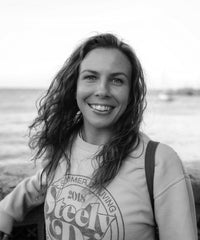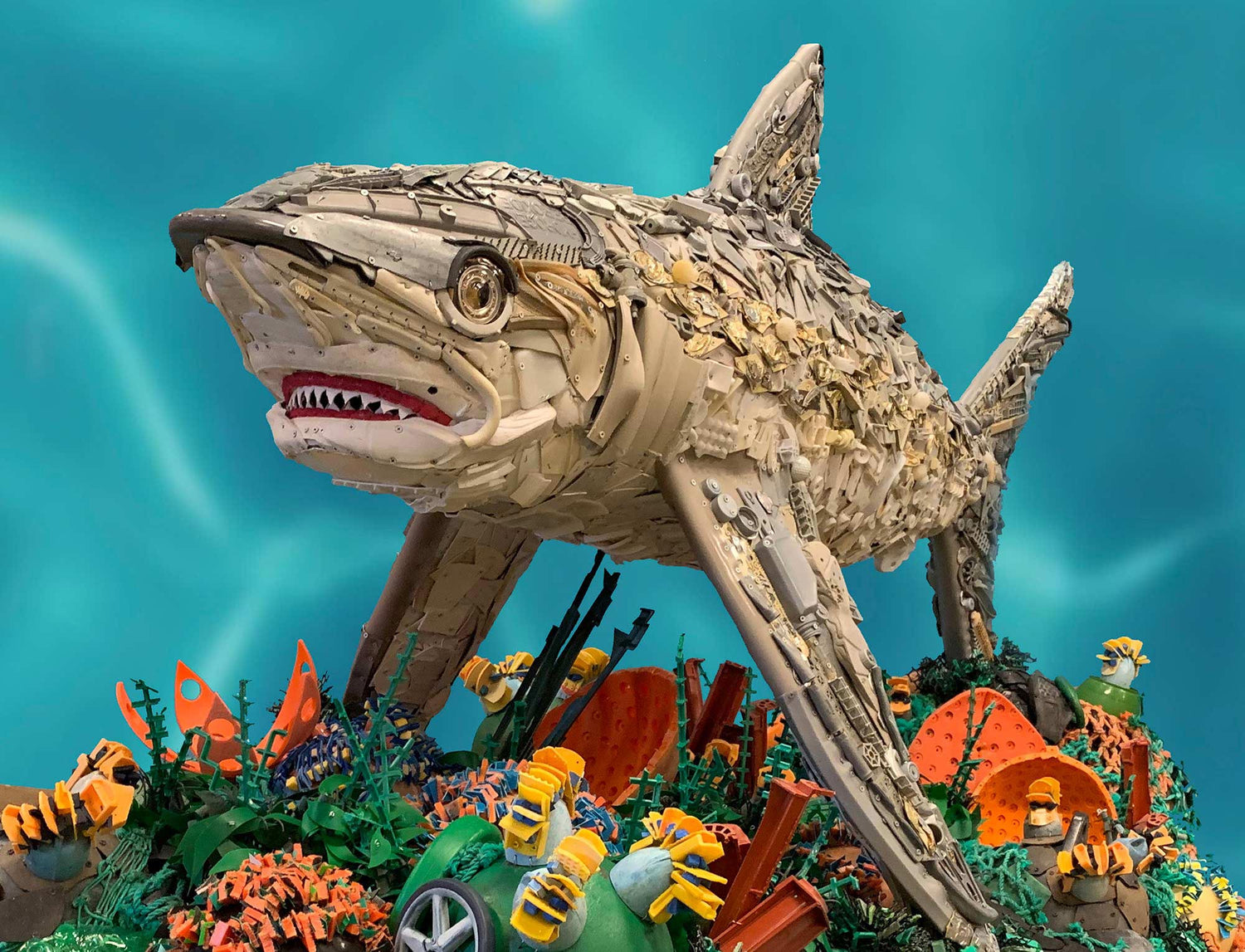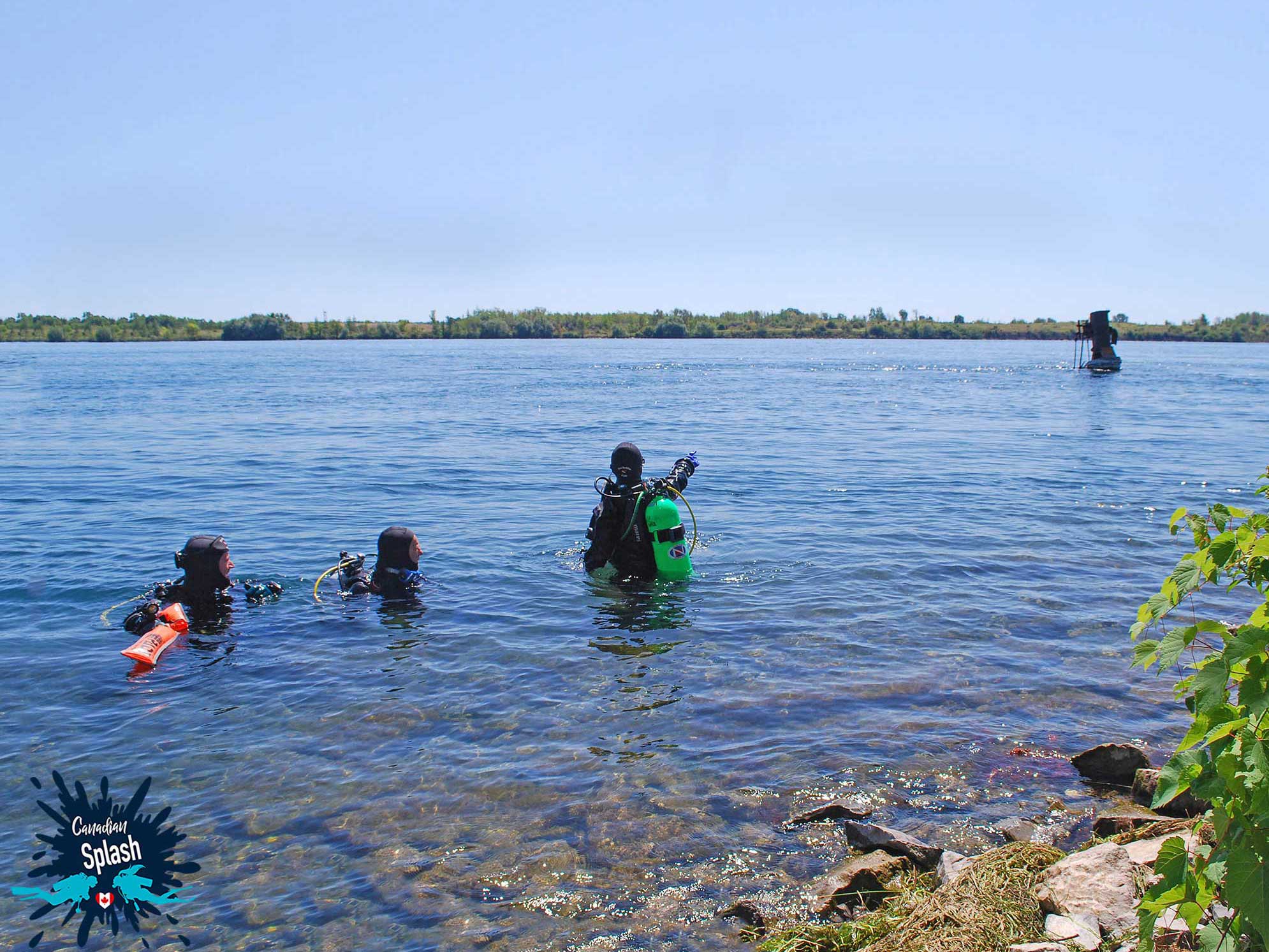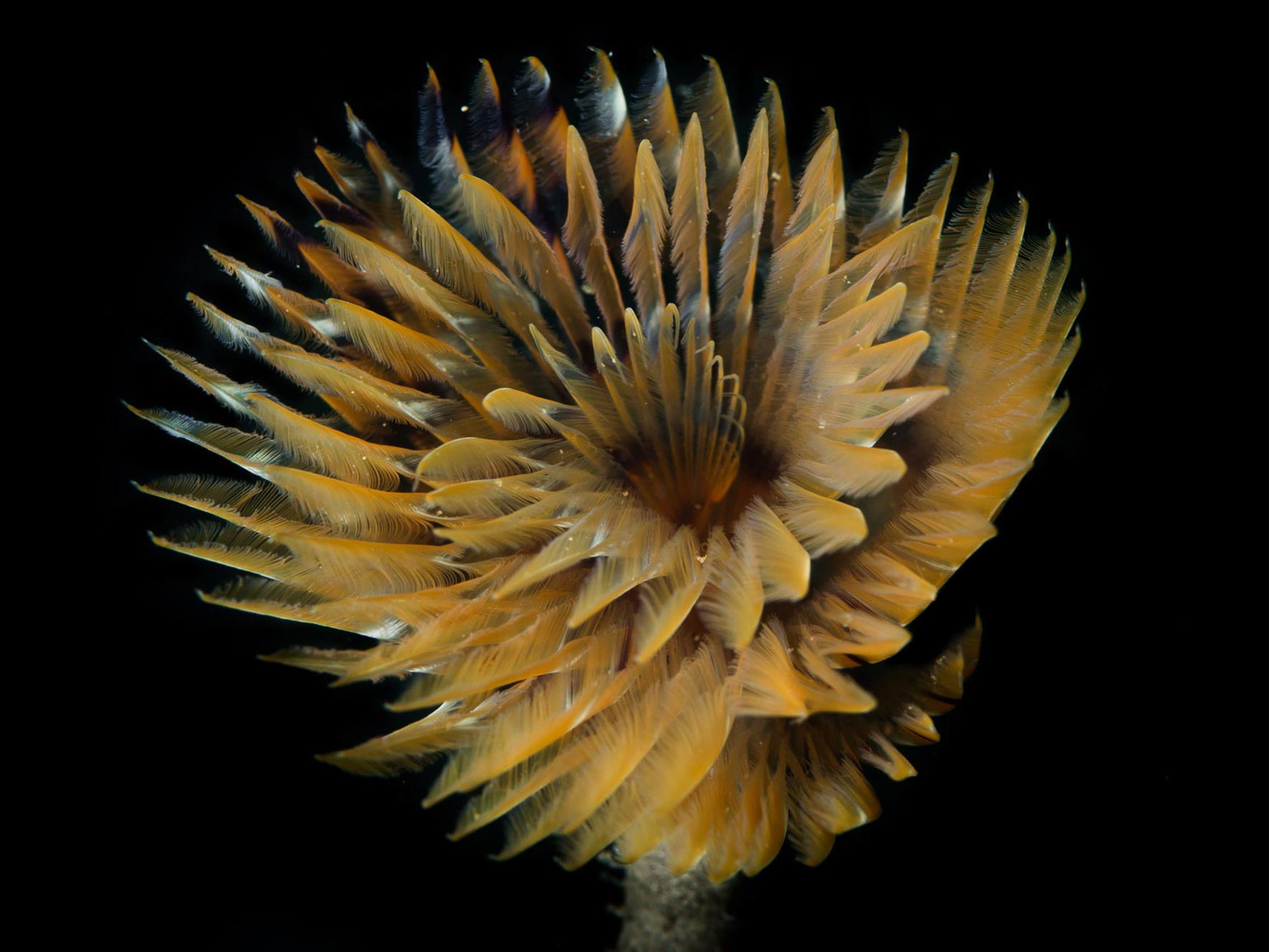Washed Ashore is a 501(c)(3) nonprofit arts and environmental education organization aimed at bringing light to the world's plastic pollution problem. Photo courtesy of Washed Ashore.
By Denise Pietsch
Washed Ashore and Waking Up
A lifelong lover of the ocean, Angela Pozzi grew up visiting the Oregon coast every summer. It was her sanctuary, a place for her daily walks, her home away from home. It was also the place she would return, many years later, to seek solace and healing in the face of grief only to find that very place was in need of a deep healing of its own. It was through this symbiotic need for survival that Washed Ashore was born.
"I was married to a wonderful man for 25 years who suddenly died of a brain tumor and my life was a real mess and I couldn’t really do what I had done before and so I was trying to find my purpose in life again, and really trying to heal, so I decided to move to Oregon. I decided I would come to the ocean to heal. I walked the beaches every day and what I found was an ocean that needed healing. I realized that there was plastic pollution on the beach that was so broken up into little tiny pieces, like sand, that it was a huge issue and I hadn’t even realized how much of an issue it was. So, I did research and learned all about it and I thought Well, if I can save the ocean that’d be a good reason to live, so let’s do that." - Angela PozziBoth of Angela’s parents were professional artists and naturalists. They foraged for mushrooms, taught Angela the Latin names of plants and animals, and instilled a deep respect of nature in her. To Angela, an arts educator of 30-years, art is a language. It surpasses merely the experience of beauty, it is capable of transforming its viewers, of communicating what facts and figures can’t convey. And so, when she was confronted with the harsh reality of plastic pollution swallowing up her sanctuary, she used the only vocabulary she knew that could speak on a level beyond words – her art.
"I just decided I would use the language of the arts to wake people up to what’s happening in a way that they can’t ignore it. I thought people would want to get their picture taken next to a giant fish. So, then they’ll have to talk about it, then they’ll have to tell people about it, then they’ll have to share it on Facebook, and then it’ll get going, and that’s exactly what’s happened." - Angela Pozzi

Angela Pozzi, pictured here, is the founder and creator of Washed Ashore, a nonprofit art and environmental education organization that seeks to bring awareness to the disastrous impacts plastic pollution is wreaking on our oceans and our world. Photo Courtesy of Washed Ashore.
Washed Ashore's Lifecycle of Litter
Thanks to the passing of Oregon’s Beach Bill in 1967, nearly all of Oregon’s coast is owned by its people, and its people value that. For Angela it was not enough that citizens just pick up the debris on the beach, only to throw it away begrudging those who littered it so carelessly, she knew that Oregonians had been doing that for years. Angela wanted to do more – she wanted to give them a chance to turn this litter into art supplies.Washed Ashore is a 501(c)(3) nonprofit, it relies on the generosity of its volunteers to not only participate in beach cleanups, but also to help clean, sort, and assemble the magnificent creatures that the plastic pollution becomes. Today, over 14,000 volunteers have graced Washed Ashore with their desire to make a difference, and it all starts with picking up what others have left behind. After a beach cleanup, the plastic is cleaned, rinsed, soaked in vinegar, scrubbed, and rinsed again. From here, each piece of plastic is sorted by color, then by size, and shape. Once everything is sorted, Angela and her team can decide what they’re able to build. They rely entirely on the colors that the plastics come in, they’re never dyed to fit a color scheme. Often, in the case of a giant Bald Eagle they’re currently working on, this means that they may have to wait years to gather enough material to create their piece.
Once Angela and her team have a design in mind, they create piecework for volunteers which is then completed and sent back to the facility for assembly. Each giant sculpture requires a stainless-steel frame that is outfitted with base plastics, often discarded tires, which can then finally have the volunteers’ piecework attached. In all, this process can take anywhere from 6-12months and sometimes even years to complete.
"We’ve now created over 85 works of art, mostly giant sculptures, processed about 30 tons of garbage off the beaches. We’ve worked with over 14,000 volunteers in making parts of the sculptures, so we involve people in the process as well, not just picking stuff up but people actually help wire things and sort plastic and all that kind of stuff." - Angela Pozzi

Washed Ashore sculptures on exhibit. Photo Courtesy of Washed Ashore.
So They Can't Ignore It
"I was actually really inspired by Marcus Eriksen of 5 Gyres. Before he started even his organization, he was scuba diving in the middle of the North Pacific Gyre and said, “If people could just see this! No one ever gets out here to see this!” and I thought Well, I can just bring it to the people! Let me just bring it to them so they can’t ignore it." - Angela Pozzi
The scale and intricacies of Washed Ashore’s work is astounding. It is large, it is looming, but it is also beautiful. It’s hard to quantify something that is, on the outset, a masterpiece of rare splendor yet is made of everyday garbage, the exact garbage that is contributing to the destruction of our most sacred spaces: our beaches, our oceans, our homes. And this is precisely Angela’s intent: to make you stare, to make you uneasy, to make you second guess your daily plastic consumption. It’s uncomfortable to see the mass amount of single-use plastic bottle caps used to create the suction cups of Octavia the Octopus, but perhaps, in that discomfort, it might provoke an observer to switch to a reusable water bottle.

Washed Ashore's Octavia the Octopus. © David Combs 2021
"These things are meant to be beautiful and horrifying and that’s kind of what we go for. And really, when you see the sculptures themselves, we’ve had people actually break down and cry. When you see a huge group of this stuff you just see how much [pollution] there is. Then we go over and talk to them and they’re moved to change their ways and that’s what the arts can do. That’s the power of visual arts or any of the art forms: you can reach the hearts and the minds of people, you can get inside their heart, and change them from the inside out." - Angela Pozzi
Roughly five years ago, Washed Ashore was invited to install a piece among the halls of The Smithsonian’s National Zoo. They created a bleached coral sculpture made from washed-up Styrofoam that was displayed directly across the hall from the coral research and propagation site. It was one day during this exhibit that Angela found herself joined by one of the researchers. He stared at the sculpture astonished and exclaimed, “Oh my God, we need this. People don’t seem to understand what we’re doing or how big the problem is. This shows it.”

Each piece is intricately crafted using everyday objects found littered on the shores of the Oregon coast. © David Combs 2021
The Intersection of Art, Science, and Activism
Art and science are often seen as disparate subjects, but Washed Ashore seeks to bridge that gap, and add a healthy dose of activism too. Having been an arts educator for 30-years, Angela knows a thing or two about the importance of education. Thus, studying each animal scientifically is an integral part of the process for her. It’s not just to ensure that the pieces are anatomically correct, which she feels helps endear scientists to her work, but to be able to give a detailed background on each animal too. Each piece of artwork gets a placard which includes information about the animal, its habitat, how plastic pollution is endangering its species, what types of everyday objects can be found within the piece, and personal actions visitors can take to help save the ocean and its inhabitants. For Washed Ashore, the whole leaves a greater impact than the sum of its parts."Making a conscious decision when you’re creating things to pay attention to the scientific part of it is a huge part of what we do. I have a piece at the Smithsonian that I made for the Museum of Natural History that’s been on display for four years now. The fact that the Natural History Museum invited me to have a piece there, that’s cool. To me, that was more exciting than if the Museum of Modern Art had asked – although I like that idea too!" - Angela Pozzi

Washed Ashore's work brings you face to face with the plastic pollution problem. © David Combs 2021
What Angela seeks most, however, is to provide a space for everyone. She seeks to make Washed Ashore an inclusive experience, one that doesn’t demean or guilt trip. From her experience, elitist art and sanctimonious activism only serve to further divide people, and united efforts are exactly what we need to create the type of sea-change necessary to save our oceans.
"When I started this, I did a lot of research and I looked at a lot of people who labeled themselves as environmentalists and I saw a lot of anger . . . and I thought I don’t want that - that’s going to divide people. I want to embrace everybody and I want to have a seat at the table with a lot of different kinds of people because everybody’s part of this and everybody loves the ocean. So, finding something in common that we all care about, if it’s the environment, if it’s something specific like the ocean, or, you know, grandkids. Whatever it is, whatever it takes – find a common thread. And you really have to have a respect for all those different things. We want to have a table where the Buddhists and the Baptists, and the Rednecks and the Hippies, and the Democrats and Republicans can all sit around the table and work together. Because then, I think, you actually get further." - Angela Pozzi
What started as a search for personal healing has turned into a movement, one that encompasses art and science, activism and acceptance, harsh realities and hopeful futures. This may be the first time in history an artist actively seeks to run out of their medium; Angela says she can’t wait to just work with clay again. In the meantime, Washed Ashore will continue cleaning up their Oregon beaches, bringing you art that is both ineffable and incandescent, art that will make you question your choices and, we hope, art that might help save our seas.

Adelie with Chick. Photo courtesy of Washed Ashore.
Follow Washed Ashore on Instagram and Facebook, or check out their website, to learn more about their organization, what you can do to help curb plastic pollution, and where you can see their next exhibit in person.

Denise Pietsch (pronounced “Peach”) currently manages Ikelite’s Photo School and social media presence. Denise hails from New Jersey, where she obtained a degree in Dance Therapy. After years teaching dance she migrated into the corporate world and eventually came around to Ikelite via the natural career path of fruit distribution and early childhood development. In the end, her lifelong love of photography and octopuses combined into the work she does now. In addition to sharing her energy and enthusiasm with the underwater community she also manages social media for her dog, Joe, collects vinyl records, and enjoys creating memories with her friends and family.
Additional Reading
Swimming Across the Pacific Garbage Patch with Ben Lecomte
6 Ways You and Your Kids Can Help Save the Sharks
Virtual Exhibition: "Wonderful Creatures and Creative Visions"
Protecting the Natural Resources of the Bahamas with Bahamas Girl
Every Little Stretch of Coast is Dying, We Need to Act Now!













